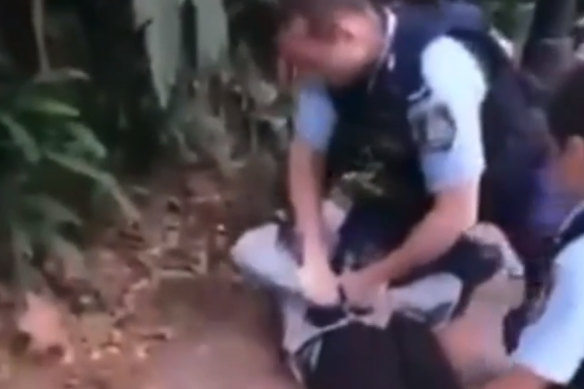Opinion
‘It’s not good enough’: Police crack down harder on young Indigenous offenders
Don Weatherburn
Professor Don WeatherburnIn July 2020 Australian state and territory governments got together and established a National Agreement on Closing the Gap, one aim of which was to reduce the number of Aboriginal adults in prison by 15 per cent by 2031.
Between making that commitment and March this year, the Aboriginal imprisonment rate rose by 18 per cent. If it continues rising at the current rate, it will be more than 40 per cent higher than it was back in July 2020.

Indigenous Australians are jailed at higher rates than other groups, and they are also arrested at higher rates.
The imprisonment rate of Aboriginal and Torres Strait Islanders is 2.5 times higher than the African American imprisonment rate and more than three times the Native American imprisonment rate. So, why is the Aboriginal imprisonment rate so persistently high?
To answer this question, it helps to know that the primary driver of Aboriginal imprisonment is a high rate of arrest. The arrest rate for Aboriginal people is between 8 and 12 times higher than for non-Aboriginal people.
And yet, the vast majority of Aboriginal people in Australia will never be arrested or imprisoned. So, what distinguishes Aboriginal people who are arrested by police from those who have no contact with the criminal justice system? The strongest risk factors are drug and alcohol use.
About one in three Aboriginal Australians aged 21-30 who report using drugs and alcohol also report having been arrested in the last five years. This compares with one in 10 Aboriginal people in the same age group who have not used drugs or alcohol.
Lying behind the risky drug and alcohol use, however, are two other factors: membership of the stolen generation and high levels of psychological stress. Both these factors contribute to risky drug and alcohol use, and to the risk of arrest.
Being a member of the Stolen Generation or having a relative who is a member of the Stolen Generation doubles the risk of arrest for 41-to-50-year-olds.
About 10 per cent of those who neither drink nor take drugs but who suffer high levels of psychological stress have been arrested in the last five years. That figure rises to 35 per cent among those who suffer from high levels of stress and who drink and take drugs.
Living in a crime-prone neighbourhood increases the risk of arrest, as does having no permanent place to live. Having close friends, living in a remote area and earning a decent income all reduce the risk of Aboriginal arrest. Completing school effectively halves the risk.
Police acknowledge all this and say that is why they shouldn’t be held responsible for reducing the rate of Aboriginal imprisonment. But they have options other than arrest when it comes to dealing with less serious offences. Under the NSW Young Offenders Act, for example, they can caution young offenders rather than prosecute them.
Recently published research, however, shows that, even after adjusting for factors police are allowed to consider when contemplating whether to issue a caution, Aboriginal young people are less likely to be cautioned and more likely to be prosecuted than non-Aboriginal young people.
At age 13 and under, 2.3 per cent of caution-eligible non-Aboriginal young offenders are prosecuted, compared with 8.5 per cent of caution-eligible Aboriginal young offenders. At age 17, 16.6 of caution-eligible non-Aboriginal young offenders are prosecuted, compared with 43.2 per cent of Aboriginal defendants.
Conviction is a kind of criminal justice snare. Once you have a criminal conviction, it gets harder to find a job, harder to stay out of trouble and easier to end up in an endless cycle of crime, arrest and imprisonment.
Police cannot caution serious offenders. But Aboriginal people coming into contact with the justice system often have mental health or drug and alcohol problems (or both).
The courts have options when dealing with adults who commit serious offences and have these problems. The Drug Court is one example.
Unfortunately, the mental health and diversionary options for more serious offenders are either under-resourced or only available in locations that are remote from the towns where Aboriginal defendants live.
If we are serious about reducing the number of Aboriginal adults in prison by 15 per cent by 2031, something has to give because, at the moment, we are going backwards.
It’s not good enough for the police to stand back and say it’s not their job to reduce Aboriginal imprisonment, that’s a job for other government agencies.
Nor is it good enough for state and territory governments to commit to reducing Aboriginal imprisonment but continue passing laws that have the opposite effect.
Start the day with a summary of the day’s most important and interesting stories, analysis and insights. Sign up for our Morning Edition newsletter.